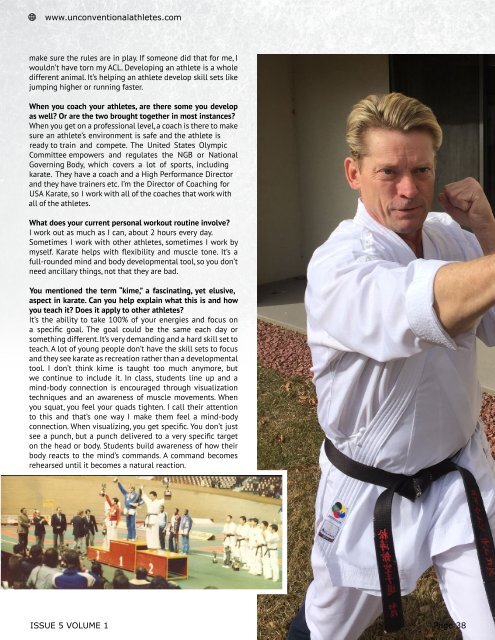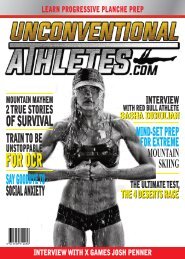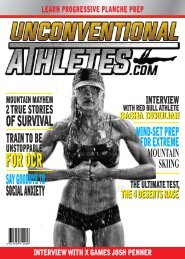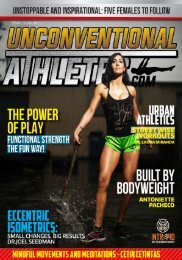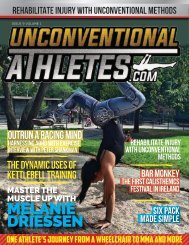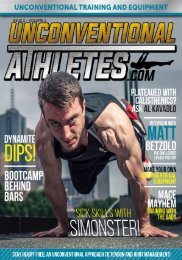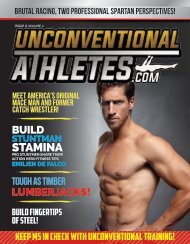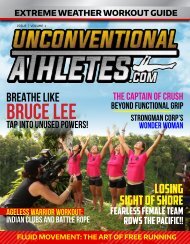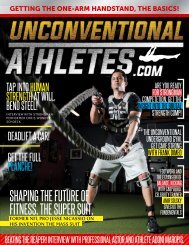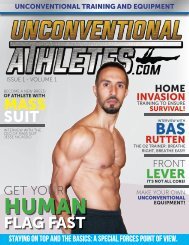Unconventional Athletes Issue 5
You also want an ePaper? Increase the reach of your titles
YUMPU automatically turns print PDFs into web optimized ePapers that Google loves.
www.unconventionalathletes.com<br />
make sure the rules are in play. If someone did that for me, I<br />
wouldn’t have torn my ACL. Developing an athlete is a whole<br />
different animal. It’s helping an athlete develop skill sets like<br />
jumping higher or running faster.<br />
When you coach your athletes, are there some you develop<br />
as well? Or are the two brought together in most instances?<br />
When you get on a professional level, a coach is there to make<br />
sure an athlete’s environment is safe and the athlete is<br />
ready to train and compete. The United States Olympic<br />
Committee empowers and regulates the NGB or National<br />
Governing Body, which covers a lot of sports, including<br />
karate. They have a coach and a High Performance Director<br />
and they have trainers etc. I’m the Director of Coaching for<br />
USA Karate, so I work with all of the coaches that work with<br />
all of the athletes.<br />
What does your current personal workout routine involve?<br />
I work out as much as I can, about 2 hours every day.<br />
Sometimes I work with other athletes, sometimes I work by<br />
myself. Karate helps with flexibility and muscle tone. It’s a<br />
full-rounded mind and body developmental tool, so you don’t<br />
need ancillary things, not that they are bad.<br />
You mentioned the term “kime,” a fascinating, yet elusive,<br />
aspect in karate. Can you help explain what this is and how<br />
you teach it? Does it apply to other athletes?<br />
It’s the ability to take 100% of your energies and focus on<br />
a specific goal. The goal could be the same each day or<br />
something different. It’s very demanding and a hard skill set to<br />
teach. A lot of young people don’t have the skill sets to focus<br />
and they see karate as recreation rather than a developmental<br />
tool. I don’t think kime is taught too much anymore, but<br />
we continue to include it. In class, students line up and a<br />
mind-body connection is encouraged through visualization<br />
techniques and an awareness of muscle movements. When<br />
you squat, you feel your quads tighten. I call their attention<br />
to this and that’s one way I make them feel a mind-body<br />
connection. When visualizing, you get specific. You don’t just<br />
see a punch, but a punch delivered to a very specific target<br />
on the head or body. Students build awareness of how their<br />
body reacts to the mind’s commands. A command becomes<br />
rehearsed until it becomes a natural reaction.<br />
ISSUE 5 VOLUME 1 Page 38


